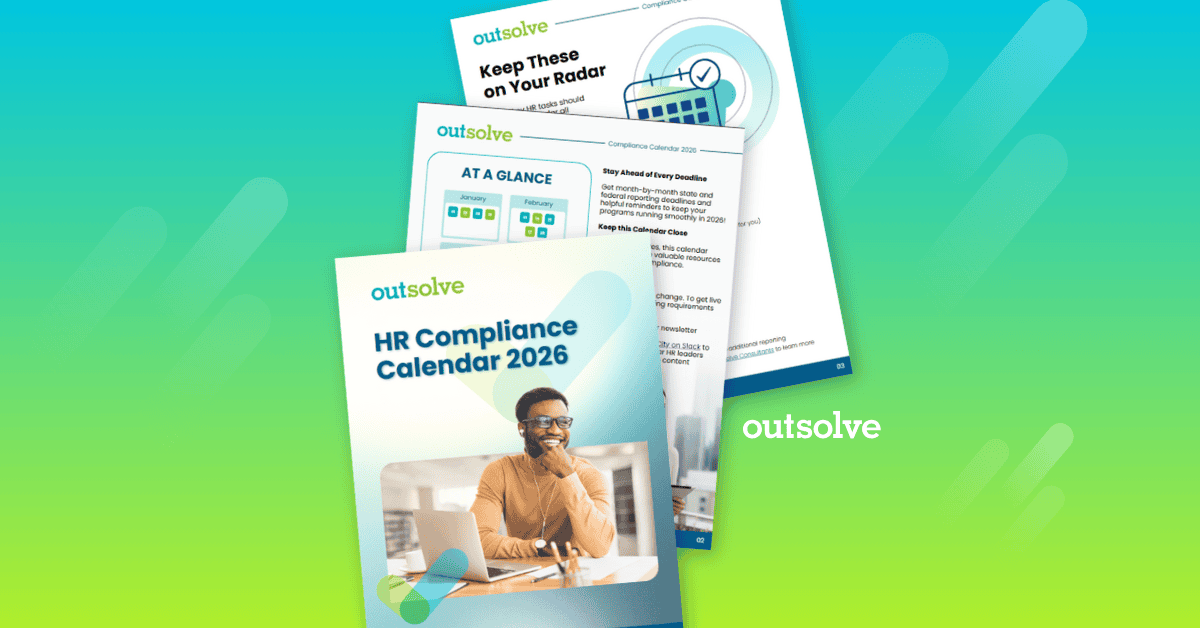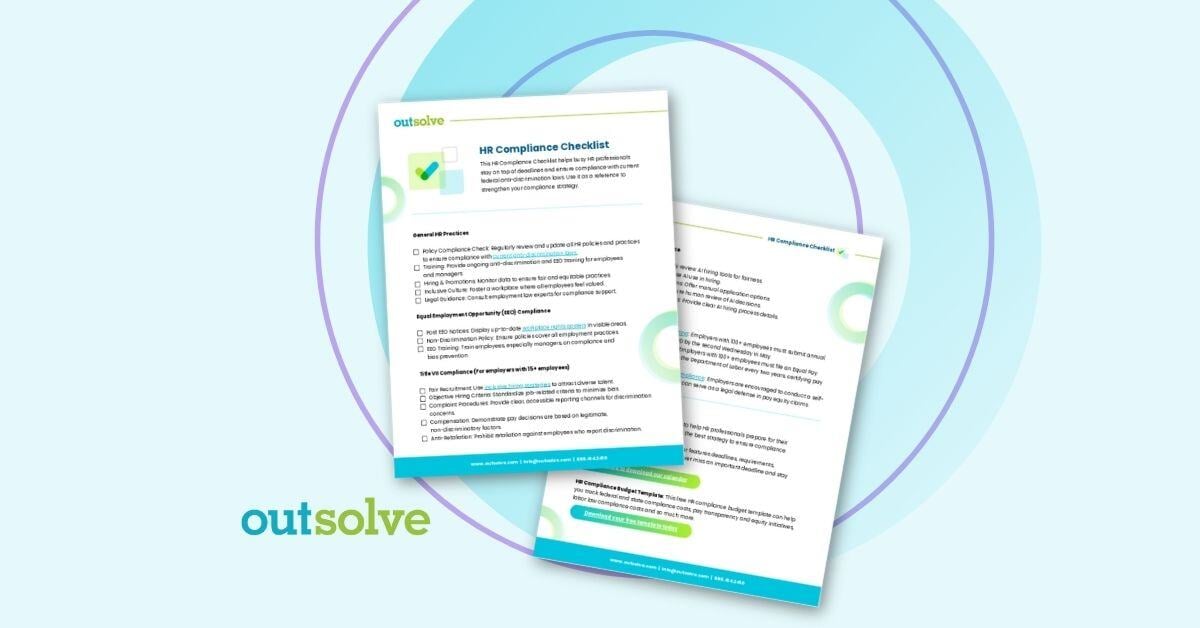5 min read
Breaking Down the Notice of Inspection for ICE Audits
 Mary Bruce
:
Nov 6, 2025 4:13:54 PM
Mary Bruce
:
Nov 6, 2025 4:13:54 PM

Getting a Notice of Inspection (NOI) from U.S. Immigration and Customs Enforcement (ICE) can make any HR professional nervous. While it may seem intimidating, understanding what an ICE audit involves and knowing how to respond can make the process less stressful.
A notice of inspection isn’t something most employers expect, but it’s something every HR professional should be prepared for, especially in this era of heightened immigration enforcement. The consequences for Form I-9 non-compliance are real, not to mention expensive.
Let’s break it down together. Whether this is your first time hearing about an NOI or you’ve already weathered one, the information in this article will help you stay confident, compliant, and prepared.
Here are three key takeaways you’ll learn in this article:
- What an NOI is, and which employers might receive one
- Key components of an NOI
- How companies should respond and common mistakes to avoid
What Is a Notice of Inspection (NOI)?
A Notice of Inspection, or NOI, is an official notification from ICE that they intend to audit your company’s Form I-9 records. As a reminder, the I-9 form is what verifies each employee's identity and authorization to work in the United States. It’s required by law for every new employee hired onto your payroll.
ICE conducts these audits to confirm that employers are properly verifying and documenting work authorization, ensuring that undocumented workers are not employed at the organization being inspected. An ICE audit doesn't necessarily mean you've done something wrong, but it does mean your I-9s will be under scrutiny.
Why does this matter? Employers found in violation of I-9 regulations can face fines ranging from hundreds to tens of thousands of dollars per employee. That’s why understanding and responding to an ICE notice of inspection correctly is critical.
Who Might Receive an NOI?
Any employer can receive a NOI from ICE. This isn’t limited to large corporations or certain industries.
ICE may issue an NOI as part of:
- A random ICE notice of inspection
- A tip or whistleblower complaint
- A follow-up from a previous violation
- Patterns of non-compliance within a specific sector (like construction, hospitality, or agriculture)
Even small businesses are not exempt. If you have employees on your payroll, then you have I-9s which puts you on ICE’s radar.
Key Components of the NOI
When you receive an NOI, you'll be provided with very specific instructions on the documents you need to gather and the deadlines for doing so. Each NOI includes detailed information about:
- Inspection date: When the audit begins. You usually have three business days from receipt to provide the requested documents. Extensions can be requested, but often are not granted, so assume from the start that you’ll only have three business days.
- Requested documents: This list often includes:
- Form I-9s for current and some former employees, typically up to 3 years back.
- Payroll records
- E-Verify confirmations, if applicable
- Business licenses
- Employee lists with hire and termination dates
- Internal I-9 audit documentation, if available
- Submission instructions: Whether the documents should be submitted electronically or presented in person
- ICE contact information: The assigned auditor’s details
Understanding each part of the required documentation is key to staying compliant and organized.
How Should Employers Respond to an NOI?
Receiving an NOI is no small matter, but if you stay organized and follow a smart and efficient response plan, you can avoid unnecessary penalties.
- Read the NOI Carefully: Take time to understand exactly what’s being requested. Make sure you know the due date and which records are required.
- Notify Legal Counsel Immediately: Bring in your legal team or employment attorney as soon as possible. Legal guidance can be invaluable during an ICE audit, especially when reviewing your forms for common errors.
- Start Collecting Documents: Begin gathering all the requested records as soon as possible, particularly your Form I-9s. Double-check them for completeness, correct signatures, and date accuracy.
- Identify Any Gaps: If you spot errors or missing documentation, correct what you can using appropriate I-9 correction procedures. Only the employee can make corrections to Section 1. The employee must draw a line through the incorrect information. Any correction should be initialed and dated. Include an attachment explaining the error and how it was corrected.
You can make technical corrections to Section 2 following the same method as the employee, however, there are some exceptions. Substantive or major errors can be corrected, but they are more complex. This is where your legal team or attorney can provide key support and consultation. Also, be sure to document your good faith efforts and improvements. Never backdate or use white-out to make any corrections. Always retain the original form. - Meet the Deadline: You generally only have three business days from the date you receive the ICE notice of inspection to respond. Even if you’re being asked to produce thousands of I-9s, it’s still a three-business day deadline. Missing that deadline could be seen as non-cooperation and possibly even non-compliance.
Common Mistakes to Avoid
Many employers inadvertently make mistakes that increase their risk of fines. Here are some common missteps you can easily avoid:
- Delaying Preparation: Don’t wait until day two or three to act. Three days is a short timeline and every minute counts.
- Submitting Incomplete or Incorrect Forms: Even small errors on your I-9s, like missing signatures or outdated documents, can result in fines. Don’t just double-check your forms—Triple-check them before submitting!
- Not Consulting Experts: Going at it alone can be risky. Legal and compliance professionals are your best allies during an ICE audit.
Why Proactive I-9 Management Matters in a NOI
The best way to handle an NOI is to be audit-ready long before one arrives. Proactive compliance isn’t just about avoiding penalties, but about building a culture of diligence and responsibility. Here’s how to stay prepared:
Keep I-9s Organized and Up to Date
Create consistent processes for completing, storing, and reviewing your Form I-9s. A little routine maintenance goes a long way. Digital storage is a great option for easily storing and accessing your Form I-9s when it matters most. Ditch the paper!
Conduct Regular Internal Audits
Self-audits are a smart way to catch issues before ICE does. Schedule them regularly, document your corrections, and continually train your HR staff. You’ll be glad you took the time upfront, prior to an audit.
Train Your HR Team
Everyone involved in onboarding must understand the I-9 process. Keeping your team educated reduces the chance of errors that could come back to haunt you during an ICE audit.
Understand the Stakes
Non-compliance can lead to steep financial penalties, ranging from approximately $200 to over $27,000 per violation, depending on the severity and whether you’ve had past issues. Being prepared significantly reduces your exposure and risk.
What NOIs Mean for Your Organization
An NOI will undoubtedly show up when you least expect it, but your response shouldn’t be improvised or haphazard. Now that you know what an NOI involves, who receives them, and how to respond, you’re already ahead of the curve. Remember too, that I-9 compliance isn’t just about avoiding fines—It’s about protecting your workforce and your company.
Here’s your quick reminder list:
- Know what a Notice of Inspection is and what triggers one
- Respond timely, accurately, and with legal support
- Avoid common mistakes, especially delays and incomplete forms
- Stay ready through regular audits and thorough record-keeping
OutSolve’s Form I-9 employment eligibility solution helps you stay audit-ready with digital storage, built-in logic to prevent errors, and crucial human oversight. It also includes:
- Secure digital I-9 storage
- Built-in error prevention logic
- Automatic reminders for reverification
- Quick retrieval for audits or self-inspections
Whether you’re facing a routine ICE audit or just want peace of mind that you’ll be ready should you receive an NOI, OutSolve helps you stay ready before the clock starts ticking. Contact us today to get started.
Prior to joining OutSolve as a Senior Consultant, Mary worked for several federal contractors preparing non-discrimination reports. She understands the complexity and ever changing demands contractors have to remain compliant. She has over 20 years working in HR and compliance related positions. Mary is a graduate of the University of Louisville, and she brings years of experience in recruiting, non-discrimination reporting and compliance.
Weekly OutLook
Featured Posts

New Year, New Deadlines: 2026 HR Compliance Calendar

outRageous HR: Plan Now or Pay Later
Related Posts

Refreshing Your I-9 Tools and Process to Stay Compliant
Form I-9 is a federal requirement that carries real consequences if handled improperly. With increased scrutiny on immigration by the current...
.png)
New Year, New Risk: Why Federal Contractors Can’t Hit Snooze
Lean in to disciplined, data‑driven compliance

An HR Year in Review: Key Updates in 2025
The unpredictability of 2025 has been an uphill trek for HR teams across the U.S. This year brought substantive employment compliance changes to...


